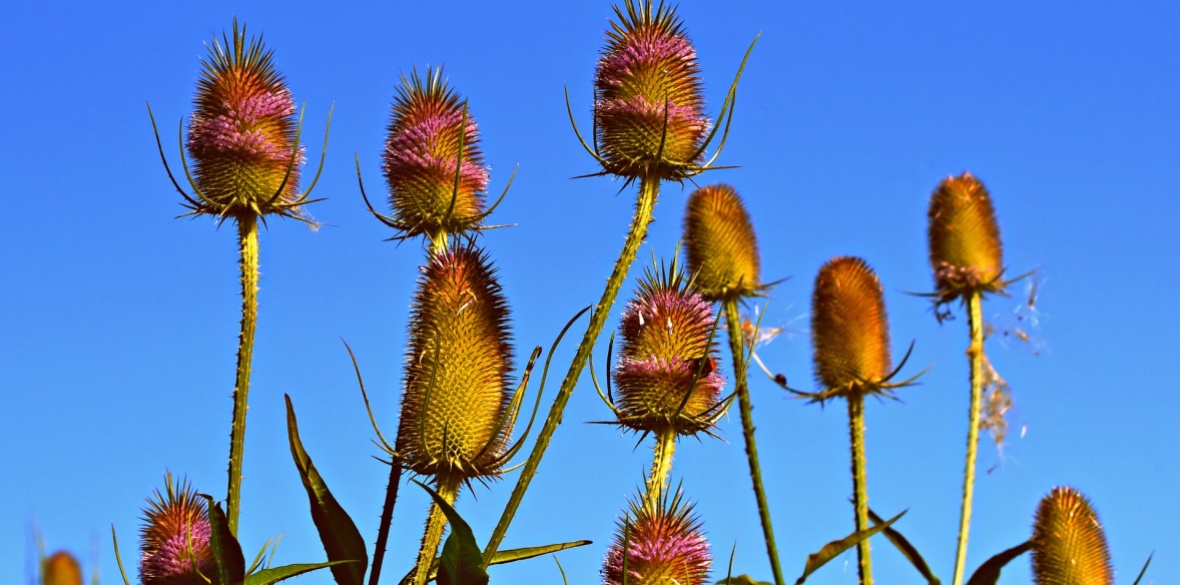This is the last article you can read this month
You can read more article this month
You can read more articles this month
Sorry your limit is up for this month
Reset on:
Please help support the Morning Star by subscribing here
I SUSPECT that the reader who told me she has a garden “literally about the size of a luggage trunk,” and asked what she could grow in it to attract wildlife, thought she was setting me a challenge. But in fact the answer is very easy: plant a teasel.
I’m writing this on a day of heavy snow, looking out of the window at my own teasel (botanical name Dipsacus fullonum), at which three goldfinches — surely the most exotic-looking of Britain’s regular garden birds — are busily feeding. They’re after the seeds, which their long, fine beaks allow them to prise out of the plant’s dead, dried flower heads.
Teasels must produce an awful lot of seeds, because the birds visit them repeatedly right through autumn and winter. If you know that goldfinches exist in your area, and you’d like to see them in your garden, then I don’t think there is any better plant you can grow. Other seed-eating birds also use teasel, though goldfinches will tend to picket them out.
The flowers themselves are on show in late summer. They’re odd-looking things, shaped like Easter eggs with belts of pink wrapped round their middles.
In my experience, there are few if any garden plants quite so intensely attractive to bumblebees, which work them methodically, and at length, from dawn to dusk. Several species of butterfly also feed on teasel’s nectar.
The teasel plant itself will grow from about four feet to six feet tall, with a sideways spread of about 18 inches to two feet. It’s a biennial species, and also one that readily self-seeds, so if you sow it for two years running you should have plants in your garden forevermore.
In its first year it grows as a flat rosette of green leaves with knobbly spines on them. The following spring it starts to shoot up, preparatory to producing its flower heads. It’s a good-looking thing at all stages, and is often grown as an ornamental.
There’s one further way in which teasel aids birds, and birdwatchers: rainwater gathers in little pockets where the leaves meet the stem, and I’ve often seen sparrows queueing up to drink it.
Both seeds and plug plants of teasel are readily available in catalogues and online. Seeds are, of course, much cheaper and are not difficult to raise.
The large seeds can be sown directly where you want them to grow, into warm soil in autumn or spring, or they can be started off indoors. Fill a small pot with seed compost, place a seed on the surface, and cover it over with a light sprinkling of compost or vermiculite.
Keep the pot at a cool room temperature of about 15-18°C (60-65°F). Germination can be quite slow — it may be several weeks before you see a seedling. Once the plants are growing strongly they can be planted outside.
Leave the old plants until the birds have stopped visiting them before pulling them up.












